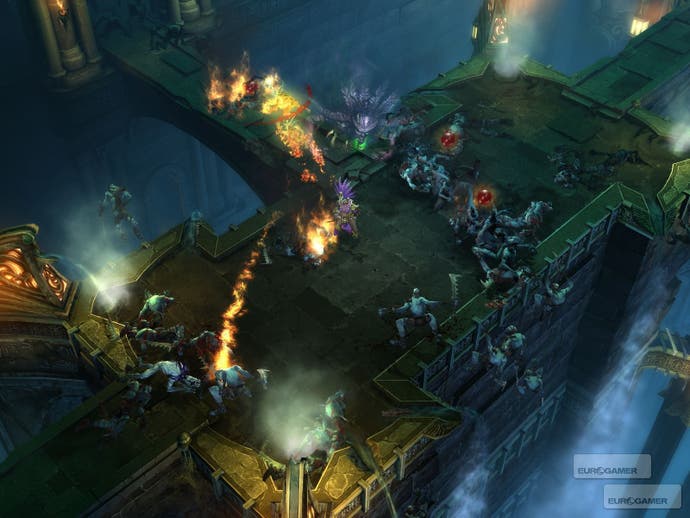Blizzard's Rob Pardo
How the world's most successful studio makes games.
"Whatever multiplayer pieces you come up with, you can turn that into a great single-player experience. That's your toolkit. You can't necessarily go the other direction. If you end up with a character that's a godlike character, then you have to work out what other characters can battle that character - perhaps you have them, perhaps you don't. Maybe now you have to create new things, but you don't have production time to do it..." Pardo shrugs.
The focus on multiplayer makes sense - after all, Blizzard makes some of the most successful multiplayer games in the world, including the world's most profitable game, World of Warcraft. However, this is also a company that's well-known for its great stories and characters. Many players attribute some of WOW's success to its "lore" and storytelling, while games like Diablo and StarCraft have their own unique mythologies. Doesn't Pardo ever get tempted to ditch the multiplayer and cut loose on building a linear, straightforward game that just tells a great story?
My suggestion earns me the closest thing to a withering look that the cheerful Pardo has in his arsenal. "I don't think you have to pick," he explains. "That's one of the things that I think is great about what we get to do here at Blizzard - we can deliver a deep single-player experience on top of a really really strong multiplayer game.
"Certainly, there are trade-offs here and there. Diablo is always a good example, because the Diablo philosophy is to ensure that every quest is playable either co-op or single-player. So certainly, there are things you can't do there. World of Warcraft is another good example.

"But if you look at Warcraft III, that had a single-player experience that didn't assume co-op at all. We could do a lot of things in the single-player, including this idea of having sub-races like the demons or the naga. They had their own buildings and their own AI around them, but they weren't in multiplayer at all and were special cases in the single-player. We have the opportunity to do things like that if we want to, where and when we want to. It doesn't mean that you have to give up the multiplayer game to do it."
Just before I leave, I ask Pardo a final question - isn't there a sense that Blizzard, despite the success of its RTS games, is really now the house that WOW built? Doesn't the MMO rather overshadow a project like StarCraft II at the company?
On the contrary, apparently. "One of the reasons why I think we're a little bit different to a lot of developers out there is that we are across different genres, and we're able to have excellence in all of them," Pardo says. "I think one of the things that's great about that is that it gives us a really creative culture and it allows us to say to people who get tired of working on, say, RTS games, that we have other opportunities available to them."
He goes on to describe how StarCraft's designers were pulled into the WOW team to help with building the map editor and working out the class balance - something which did, admittedly, delay StarCraft II significantly - and how the Diablo III team invites WOW's designers to meetings to discuss monster encounters. "There's a lot of cultural sharing of knowledge," he explains.

"We keep high-level talent, and we have talent within the company that gets to contribute to different projects outside of their genre. It makes the company better and it makes the games better."
While expectations are running incredibly high for everything that Blizzard does these days - would any other game developer have faced the bizarre outcry over Diablo III's colour palette, for example? - the pressure doesn't show in the company's headquarters. Pardo himself knows plenty about handling pressure.
"StarCraft II has huge expectations, WOW had huge expectations, Diablo II did, Warcraft III... We have a pretty big track record now that we want to live up to, so we just have to keep on trying to top ourselves and doing the best we can - and not being scared to do it." With Diablo III and StarCraft II both on the horizon, gamers around the world will be hoping that Blizzard's nerve holds for a while longer.
